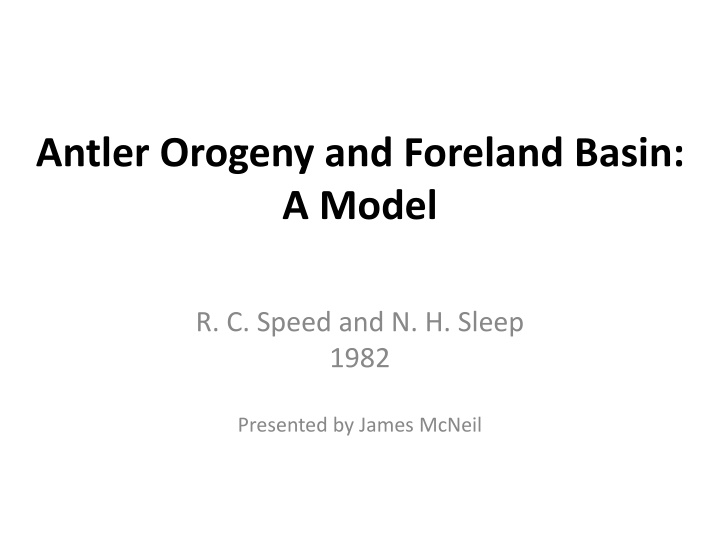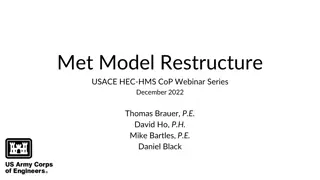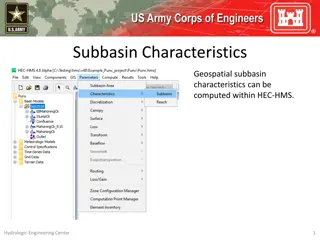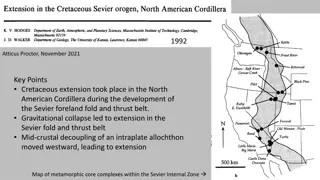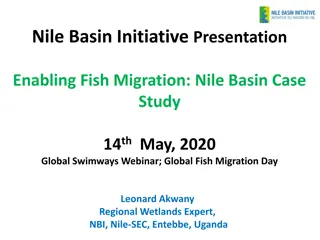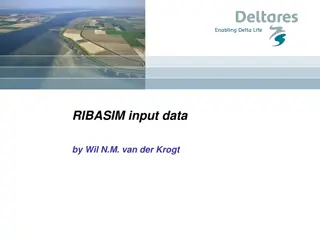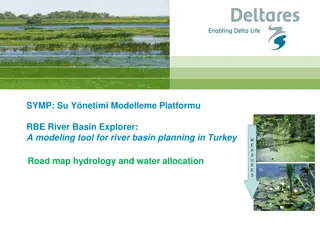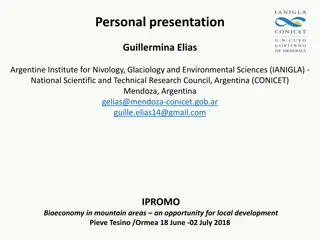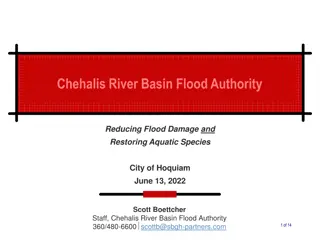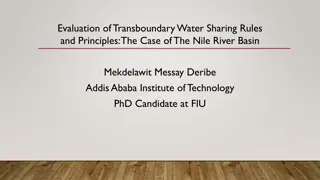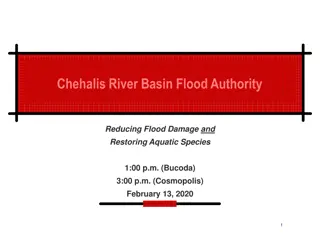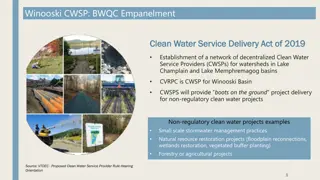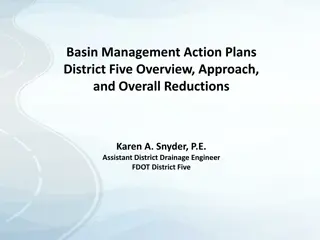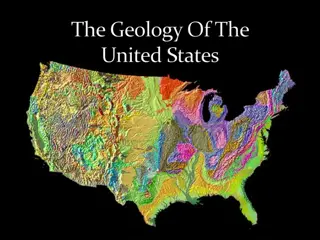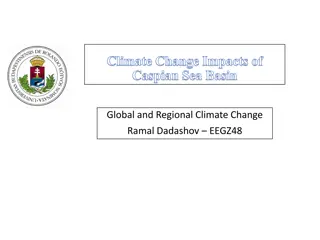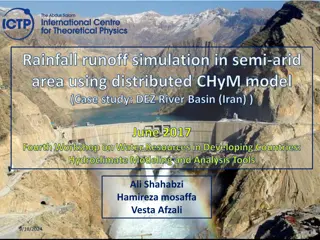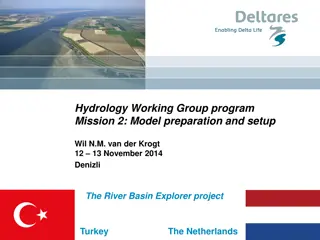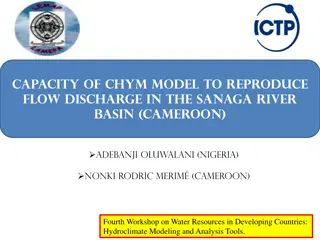Antler Orogeny and Foreland Basin Model Overview
The Antler Orogeny, a Late Devonian to mid-Early Mississippian event, impacted the passive margin of the North American continent, particularly in Nevada and Idaho. The orogeny involved displacement of oceanic strata, subsidence of a foreland basin, and maintenance of highlands in the interior region. Basic problems include understanding the tectonics initiating the orogeny and mechanisms for thrusting oceanic strata. Post-Antler tectonism saw four phases of deformation, while the Tectonic Enclave of Central Nevada is a key focus. Various assumptions and events related to the orogeny provide insights into the geological processes at play.
Uploaded on Sep 07, 2024 | 4 Views
Download Presentation

Please find below an Image/Link to download the presentation.
The content on the website is provided AS IS for your information and personal use only. It may not be sold, licensed, or shared on other websites without obtaining consent from the author.If you encounter any issues during the download, it is possible that the publisher has removed the file from their server.
You are allowed to download the files provided on this website for personal or commercial use, subject to the condition that they are used lawfully. All files are the property of their respective owners.
The content on the website is provided AS IS for your information and personal use only. It may not be sold, licensed, or shared on other websites without obtaining consent from the author.
E N D
Presentation Transcript
Antler Orogeny and Foreland Basin: A Model R. C. Speed and N. H. Sleep 1982 Presented by James McNeil
Antler Orogeny Late Devonian to mid-Early Mississippian Passive margin of North American continent likely in Nevada and Idaho Focus on the tectonic enclave of central Nevada
Principal Events of the Antler Orogeny 1. Displacement of oceanic strata in the Roberts Mountains allochthon up to 140 km toward the early Paleozoic shelf 2. Subsidence of an elongate foreland basin 3. Maintenance of highlands in the interior region of the allochthon following subsidence of the foreland basin Antler orogeny doesn t appear to have been accompanied by a thermal event or major crustal shortening
Basic Problems of the Antler Orogeny 1. The tectonics that initiated it 2. Mechanisms for thrusting oceanic strata ~4 km vertically and tens of km laterally 3. Reasons for subsidence of the foreland basin and apparent coupled uplift with a hinterland to the west
Post-Antler Tectonism Four Phases 1. Late Paleozoic deformation, uplift and removal of the Roberts Mountains allochthon between Winnemucca and Elko 2. Golconda allocthon emplaced above Robers Mountans allochthon (little to no deformation of sub-Golconda rocks) 3. Jurassic and Cretaceous deformation of the Cordilleran thrust and fold belt 4. Cenozoic Basin and Range tectonics causing extension of 10%-20% in a west or northwest direction in central Nevada (width of Roberts Mountains allochthon in central Nevada was initially 15-30 km less) Mesozoic foreland thrusting is the main source of disturbance of Antler orogenic features throughout the central Cordillera except in the tectonic enclave in central Nevada
Tectonic Enclave of Central Nevada Focus of the study Assumptions Antler-related rocks are essentially unchanged from their Mississippian positions relative to the Paleozoic shelf Eastern limit of lower Paleozoic oceanic rocks is the approximate trace of the Roberts Mountains thrust If a Mesozoic decollement extends from eastern to western Nevada it exists within or below the lower Paleozoic shelf section
Thickness Curves Two time divisions of thicknesses of foreland basin strata (Poole and Sandberg, 1977 and Stewart, 1980) Not precise but suggest broadening of the basin over time and an increase in subsidence rates westward Maximum subsidence rates cannot be determined based on poor preservation of beds in the west (1982)
This paper: Presenting evidence to support the early view of mid-Paleozoic emplacement Paleozoic Orogen 1. Kinderhookian age of onset of subsidence of the Antler foreland basin and provenance of the bulk of foreland basin sediments from a western highland are lithologically like the Roberts Mountains allochthon 2. Overlap of Roberts Mountains allochthon above lower Paleozoic shelf strata and coincidence of present outcrop boundaries between them 3. Undeformed Triassic and late Paleozoic strata in central Nevada above the Roberts Mountains allochthon W = water; O = oceanic crust; AP = accretionary prism
Initiation of the Antler Orogeny Arc-Continental Collision Model Conceptual model of the collision of an Antler arc system and the western edge of sialic North America Hypothesis of arc- continental collision model lacks evidence of an established Antler magmatic arc Lack of Antler arc exposure can be explained by deep subsidence due to thermal contraction W = water; O = oceanic crust; AP = accretionary prism Rate of subsidence from thermal contraction: d-depth to basement, t-time after initial heating, pa-density of asthenosphere, pf-density of fill above contracting lithosphere, A-constant
Conceptual Evolution of Antler Foreland Basin Stage A accretionary prism nearly submerged Stage B & C accretionary prism emerges above sea level Stage C elastic deflection of continental lithosphere and shedding of sediment toward the continent (eastward migration of prism) Stage D sedimentation decreases and shelf-like configuration is restored Deflection of a thin elastic plate N-flexural rigidity of the plate; w-vertical displacement; x horizontal distance; k- difference between specific weight between asthenosphere and basin fill material; g- gravity; p(x)-driving load per unit area F = forearc basin; W = water
Uplift in Front of the Thrust Sheet No erosion is assumed to occur at times A, B, and C Time D a region originally at sea level is uplifted by flexure and eroded back to sea level The broad uplift may have produced an observable time-transgressive unconformity
Conclusions Model suggests initiation of activity for the Antler Orogeny was due to an arc- continental collisions and that the highland-foreland basin coupling was due to vertical loading of the continental shelf by a beached accretionary prism Subsidence of Antler magmatic arc after collision due to thermal contraction Initial Antler highlands were the subaerial part of the accretionary prism and Deepest part of the foreland basin was at the toe of the prism Take Home Point: Antler Orogeny occurred in the Mississippian as an arc-continental collision involving a large accretionary prism (Roberts Mountains allochthon) that was underthrust by a continental slope. The Antler magmatic arc was thermally contracted or subducted in a later arc collision (Triassic) Flexural bulge up to 350 m preceded the migrating foreland basin
